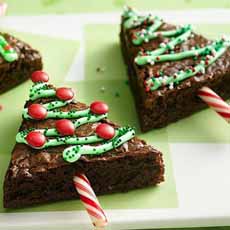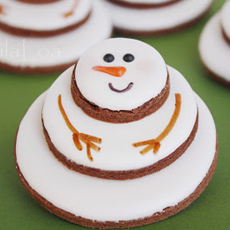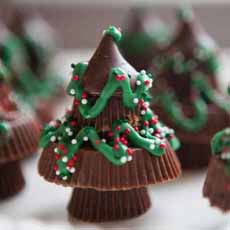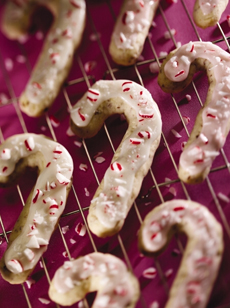Christmas Cookie Recipes For National Cookie Day
|
December 4th is National Cookie Day, and it’s also the time when happy bakers are whipping up dozens of Christmas cookies. Here’s a roundup of some of our favorite recipes, below. But first… Modern Christmas cookies can trace their history to recipes from medieval northern European biscuits (cookies), when many “modern” ingredients became available for the first time: almonds, black pepper, cinnamon, clove, ginger, mace, molasses, and nutmeg, along with dried fruits from southern climates, such as apricots, citron, and dates. These ingredients were still costly, and only for Christmas would many families be able to afford to bake with them. This led to special Christmas cookies. Unlike pies or cakes, cookies had a long shelf life and could be easily given as gifts to friends and neighbors. This led to the creation of spiced butter cookies as well as gingerbread, krumkake, lebkuchen, pepparkakor, pfeffernüsse, and springerle. Decorating the cookies with icing began in the 1600s, when bakers used a mixture of sugar and egg whites to top the cookies. The cooled frosting looked like ice. While gingerbread cookies existed, the first gingerbread men were created in the royal kitchens of Queen Elizabeth I of England (1533-1603), who had the cookie molded into the shapes of her favorite courtiers. Christmas Cookies In The U.S. The earliest examples of Christmas cookies in the U.S. were brought by German settlers in Pennsylvania (the “Pennsylvania Dutch” in the 1700s. But it wasn’t until the period between 1871 and 1906 that import laws made cookie cutters from Germany widely available, including those with holiday images that were designed to hang on Christmas trees [source]. While holiday cookies are often cut into the shape of angels, candy canes, Christmas trees, holly leaves, reindeer, stars, and other seasonal themes, some are conventional round cookies or bars in holiday flavors (eggnog, cardamom-spice, gingerbread, peppermint, etc.). > THE 8 DIFFERRENT TYPES OF COOKIES Not all of these are shaped like stars or spiced like gingerbread, but they represent holiday traditions in the U.S. Check out: |
|
|







